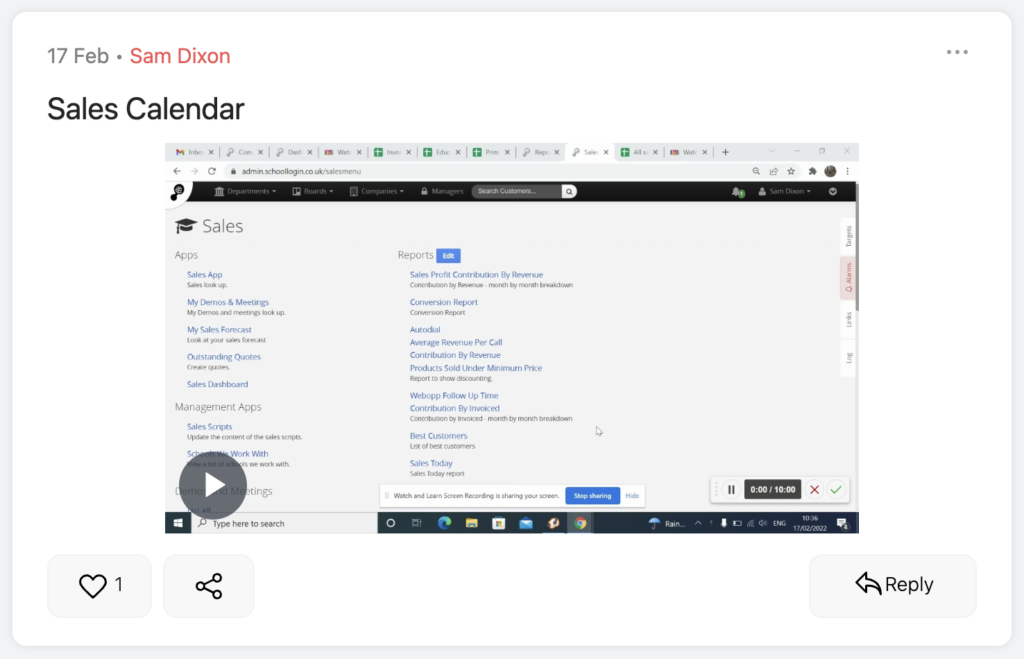
In the last few years, I’ve noticed a trend in corporate learning and performance support. Companies are moving away from traditional training programs in favor of a more “on-demand” approach. This is a very good thing! In fact, it’s something that we’ve been doing here at Watch and Learn for quite some time now. However, there’s one aspect of this trend that I feel hasn’t received enough attention. The idea of learning in the flow of work. “Learning in the flow of work” refers to how we learn on the job. It means that rather than separating our learning and performance support from actual work tasks, these two elements should be integrated together seamlessly into our daily lives as employees so that we can improve results without wasting precious time or resources.
For example, if a sales rep needs to learn how to use a new CRM system, rather than taking them out of their day and training them for an hour or two, why not have the CRM vendor come in and offer a live demo so that they can see how it works together with other systems they already use in the course of their everyday tasks? Why not provide this learning opportunity while the rep is still on the job rather than waiting until after work hours?
Learning relevant to your current task
In the article, author Neil Baxi explains that learning in the flow of work is about making sure that what you’re learning is relevant to your current task. In order to do this, he suggests asking yourself questions like:
- What problem am I trying to solve?
- What is my goal for today?
- What objectives must I accomplish before I can be successful at tackling this problem or achieving my goal?
A definition of Learning in the Flow
A definition of Learning in the Flow of Work by Norman Jacknis and Charles Jennings is: “Work-integrated learning occurs when learning, performance improvement, and knowledge creation activities are fully integrated into and across the various tasks and processes that make up work.” The authors wanted to broaden this view to include more than just formal classroom learning, but also informal learning happening through mentoring, coaching, or peer exchanges.
The idea that people can learn from on-the-job experiences has been around for a long time. For example, John Dewey’s famous quote about education being “a process of living and not a preparation for future living” suggests that learning happens as part of our everyday lives.
How we learn on the job
When it comes to learning, simply put, it’s a way of delivering information when and where employees need it. It’s not a new concept, but it has gained popularity in recent years due to ever-changing work environments and the growing desire for companies to offer more flexible training options.
Training is important because smart companies know that their people are their most valuable asset. As such, they want to provide them with the right information at the right time so they can do their job better and be successful in their career path.
Search for answers or try to find someone who can help improve results
One way to improve this process is for companies to support it with technology. For instance, when an employee is struggling with a problem or has a question about how to do something, rather than having them search for answers or try to find someone who can help them, using a tool like Watch and Learn can help measurably improve results.
Watch and Learn provides easy access to existing training materials in context (immediately available) and in the moment (wherever you are), making getting answers quickly and easily without leaving your workflow possible. This improves your ability to get results by providing employees with immediate access to information they need—and helps keep business moving forward without interruption. By providing employees with easy access to existing training materials in context and in the moment, they can get answers quickly and easily without leaving their workflow.
Watch and Learn is a simple, easy-to-use tool. It allows employees to get answers quickly and easily without leaving their workflow. Watch and Learn is available with a free 3 month trial free version, which can be used for unlimited video recording and storing videos up to 1GB.
Below is an example of a screencast created to support a new member of staff who doesn’t know how to use the sales calendar in the CRM:

4 ways Watch and Learn can help with learning in the flow of work
- Immediate access to existing training materials
- Learning on the job
- Increase productivity and efficiency
- Improve the quality of work
While there’s still a lot of work to be done, this is a great first step towards creating a more seamless and effective learning experience. With Watch and Learn, business leaders can take their training programs to the next level by giving their employees access to training materials in context and on demand.